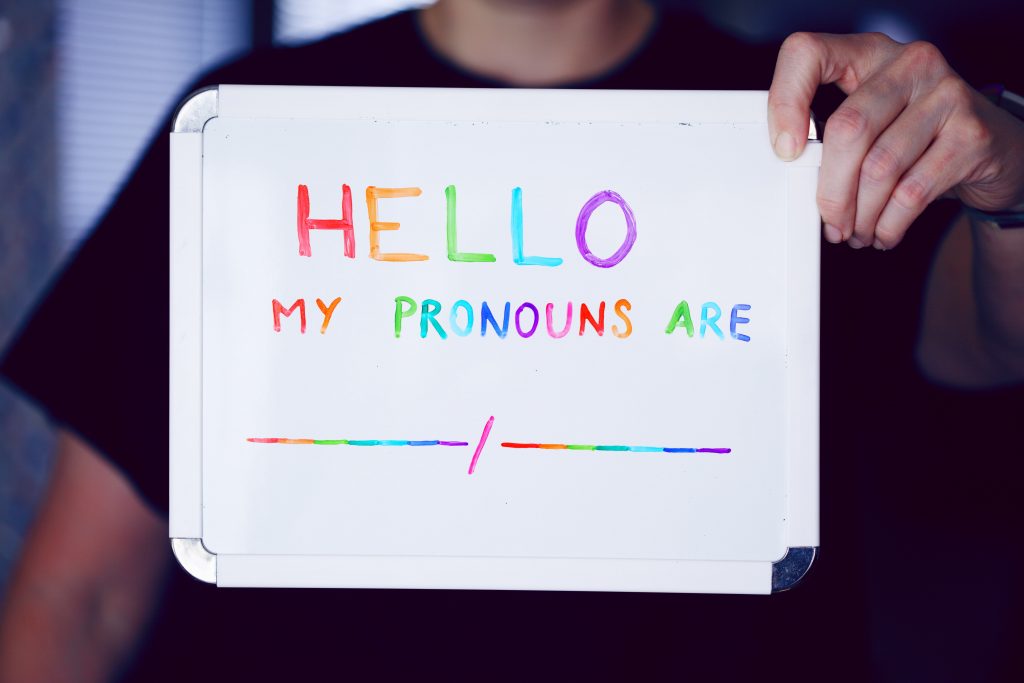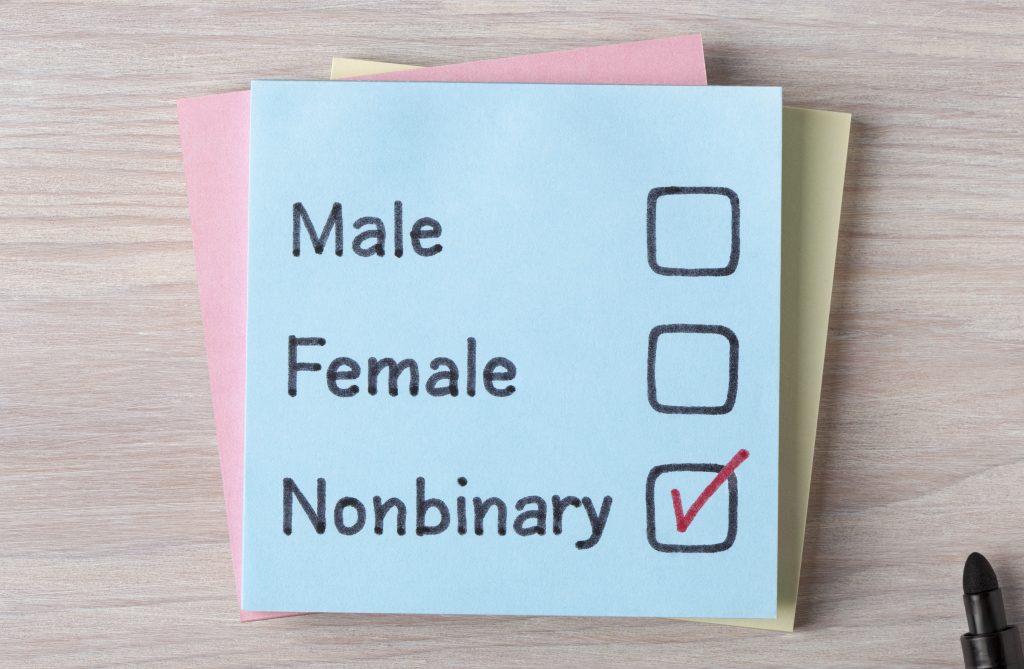
Intimate partner violence and abuse (IPVA) is defined as any harmful behaviour perpetrated towards a partner or ex-partner. IPVA is an important determinant of mental health (Oram et al. 2022). Studies of a range of different data sources (health records, surveys of the general population, police records) have pointed to an increase in IPVA during the COVID-19 pandemic (Piquero et al. 2021).
The greatest concern has focused on the impact of IPVA on women, because evidence suggests women experience IPVA with greater frequency and severity than men (Heise et al. 2022). The vast majority of IPVA research is hetero-normative, i.e. assumes that women and men are in heterosexual relationships. Like much biomedical research, research into IPVA has also very rarely considered distinctions between sex (e.g., classified anatomically at birth by birthing professionals), and a person’s gender.
A person’s gender is relevant to their risks of IPVA, but few studies have considered the impact of IPVA on non-heterosexual couples during pandemic, or other sexual and gender minorities. Evidence on the occurrence of perpetrated and experienced IPVA during the pandemic among sexual and gender minority couples is very limited. Gilchrist and colleagues examined this using multi-country drug survey data from the Global Drug Survey (GDS), COVID Special Edition.

Research points towards greater intimate partner violence and abuse (IPVA) towards women compared to men, but has not considered IPVA in relationships where one or both partners are non-binary.
Methods
The authors analysed data from the GDS, which collected nearly 60,000 responses from 171 countries. After removing countries with fewer than 500 responses, and excluding people without partners, the data they analysed was 35,984 participants with one or more current partners living in 13 countries (Australia, Austria, Brazil, Denmark, France, Germany, Greece, Ireland, Netherlands, New Zealand, Switzerland, UK, and the US).
The authors used responses on gender identity to create five intimate relationship groups: women partnered with men, women partnered with women, men partnered with men, men partnered with women, and partnerships where one or both partners were non-binary.
Intimate partner violence and abuse experience and perpetration was measured using an abbreviated version of the 15 item Composite Abuse Scale Revised- Short Form (CASR-SF). There were items for different aspects of abuse (financial abuse, emotional abuse, coercive control, threatening behaviour, technology-facilitated abuse, physical abuse, sexual abuse); assessed frequency; and asked if IPVA had increased, decreased or stayed the same since the start of Covid restrictions.

Using the Global Drug Survey, Covid Special Edition, the researchers estimated the prevalence of IPVA experience and perpetration among several intimate relationship groups, including men partnered with men, women partnered with women, and partnerships where one or both partners were non-binary.
Results
Across the entire sample, 20% reported experienced or perpetrating IPVA, while 10.5% reported both experiencing and perpetrating IPVA. 7.4% had only experienced IPVA (not perpetrating IPVA); and 6.1% had only perpetrated (IPVA) during Covid restrictions. There were statistical differences in the prevalence of IPVA exposure between intimate relationship groups: e.g., 22% of non-binary respondents or respondents with non-binary partners reported IPVA exposure, compared to 16.6% of women partnered with men (which was the group reporting the lowest exposure to IPVA). There were also statistical differences in the prevalence of IPVA perpetration between intimate relationship groups: e.g., 23.1% of non-binary respondents reported IPVA perpetration, compared to 15.5% of men partnered with women and 15.4% of women partnered with women. Non-binary respondents reported the highest prevalence of both experiencing IPVA and perpetrating IPVA.
Non-binary respondents or respondents with non-binary partners experienced the greatest proportion of financial abuse, controlling behaviour, technology-facilitated abuse, and physical abuse; and the highest perpetration of emotional abuse, technology-facilitated abuse, physical abuse and sexual abuse. Men who partnered with men experienced the highest prevalence of sexual abuse.
In models, the investigators focused on predictors of increased IPVA exposure, and IPVA perpetration, during Covid restrictions. They found that greater distress, poorer coping, reduced alcohol, increased alcohol, and White ethnicity were associated with increased IPVA exposure during pandemic restrictions. Younger age, greater distress, lower income, poorer coping, reduced alcohol, increased alcohol use, were associated with increased IPVA perpetration during pandemic restrictions.
Overall, 12% of the sample met the criteria for severe psychological distress, but the highest proportion of severe psychological distress was observed amongst non-binary respondents and respondents in a relationship with a non-binary partner (34.4%). Men partnered with men reported the greatest proportion of increases in alcohol use during Covid restrictions (40.4%).

In this survey of people using drugs and alcohol, non-binary people, or those in relationships reported with non-binary people, reported the highest levels of both experiencing and perpetrating intimate partner violence and abuse.
Conclusions
IPVA occurs in intimate relationships irrespective of the gender of the victim, or perpetrator. People in non-binary relationships experienced and perpetrated the most IPVA, compared to other relationship groups. It was challenging for the authors to compare their results with previous literature, because there wasn’t any. So much more needs to be learnt about IPVA occurring in the context of non-binary relationships, especially because of the increasing evidence of greater IPVA burden among sexual and gender minorities.
Like other studies, this analysis found that men partnered with women reported a slightly higher prevalence of IPVA exposure compared to women partnered with men. Surveys struggle to capture the burden and impact of IPVA, and the use/experience of service strategies (beyond the single self-report item used in this study) can be important to accurately capture relevant outcomes and display greater gender asymmetry.

Much more needs to be learnt about IPVA occurring in non-heterosexual relationships, especially considering the increasing evidence of greater IPVA burden among sexual and gender minorities.
Strengths and limitations
This was a large study and the largest study which has examined IPVA in non-binary individuals. There were small numbers for some relationship groups, limiting the ability of the study to assess all types of intimate relationships. The study excluded people who were not using substances (including alcohol), and people needed Internet access to take part in the survey. Recruitment was through word of mouth, social media and other strategies, which may have biased the sample, but conversely, this form of sampling might mean that more sexual and gender minorities are included, as LGBTQI+ individuals are likely to be excluded from other surveys, for example, household surveys.
As the authors argue, the value of this study is the estimation of the prevalence of IPVA experience, and IPVA perpetration, in relationship groups/gender identities which are not widely studied. If you assume that general population surveys (which might involve picking houses from a list at random and door knocking (McManus et al. 2022)) would under-represent non-binary and transgender people exposed to IPVA, then this study’s estimates may provide an upper bound to the prevalence of IPVA towards non-binary and transgender people.
On the other hand, we don’t know this for certain, and random samples of the population are still needed to build a good picture of the prevalence and burden of IPVA, including for sexual and gender minority groups. The authors raise the important issue of the need for in-depth understanding of the distinct experiences of IPVA victims who are themselves non-binary or who are in relationships with non-binary people. Quantitative studies measuring the impact of IPVA with a circumscribed number of items do not capture the depth and intensity of IPVA. Equally, IPVA perpetrated in non-heterosexual relationships may involve patterns of behaviour, attitudes, and harmful strategies which are somewhat distinct from, or overlap with, heterosexual couples, and surveys cannot capture this. There may also be specific health and mental health outcomes which need to be identified.
Making argument for improved provision for non-binary couples might be enhanced by evidence of specific health impacts, but this study alone cannot do this – everybody included in the study was using alcohol or other substances, and the strength of the association of IPVA with mental ill health might be biased.
The wider study, the Global Drug Survey, is a study of drug use – accompanying information states that two thirds of participants are experienced with drug use and are happy to share their experiences. This should inform how the findings of the paper are interpreted. Results might not be generalisable to populations with lower levels of drug use. This study was focused on thirteen countries with the largest numbers of respondents, which means that countries with smaller numbers of respondents were excluded. This might be important because, collectively, there were a large number of respondents excluded from the analysis on this basis.

Quantitative studies with a circumscribed number of items do not capture the depth, intensity or patterns of IPVA in non-heterosexual relationships.
Implications for practice
Targeted and evidence-based support for everyone who experiences and perpetrates IPVA irrespective of their gender and sexual orientation, is critical. The high prevalence of IPVA perpetration in non-binary relationships found in this study implies that perpetrator interventions and survivor support for this group could be important. Professionals who provide care (including health and mental health care) should be aware of the prevalence of violence and psychological distress among this population, and have clear referral pathways in place if they should identify violence in a relationship in order to maintain safety for both partners. Given the strong burden of IPVA experience and perpetration in non-binary individuals/relationships, it is vital that research focuses on understanding the extent and patterns of IPVA in these relationship contexts, and what works to prevent and reduce IPVA.

Mental health professionals should be aware of the prevalence of violence and psychological distress among those in non-heterosexual relationships, and have clear referral pathways in place.
Statement of interests
None.
Links
Primary paper
Gilchrist, G., Potts, L.C., Connolly, D.J. et al. Experience and perpetration of intimate partner violence and abuse by gender of respondent and their current partner before and during COVID-19 restrictions in 2020: a cross-sectional study in 13 countries. BMC Public Health 23, 316 (2023). https://doi.org/10.1186/s12889-022-14635-2
Other references
Oram S, Fisher HL, Minnis H, Seedat S, Walby S, Hegarty K, et al. The Lancet Psychiatry Commission on intimate partner violence and mental health: advancing mental health services, research, and policy. The Lancet Psychiatry. 2022;9(6):487-524.
Piquero AR, Jennings WG, Jemison E, Kaukinen C, Knaul FMJJocj. Domestic violence during the COVID-19 pandemic-Evidence from a systematic review and meta-analysis. 2021;74:101806.
Heise L, Garcia-Moreno C, Krug E, Dahlberg L, Mercy J, Zwi A, et al. World report on violence and health. World report on violence and health. 2002.
McManus S, Walby S, Barbosa EC, Appleby L, Brugha T, Bebbington PE, et al. Intimate partner violence, suicidality, and self-harm: a probability sample survey of the general population in England. 2022;9(7):574-83.
Photo credits
- Photo by Katie Rainbow
on Unsplash
- Photo by Alexander Grey on Unsplash
- Photo by Etienne Boulanger on Unsplash
